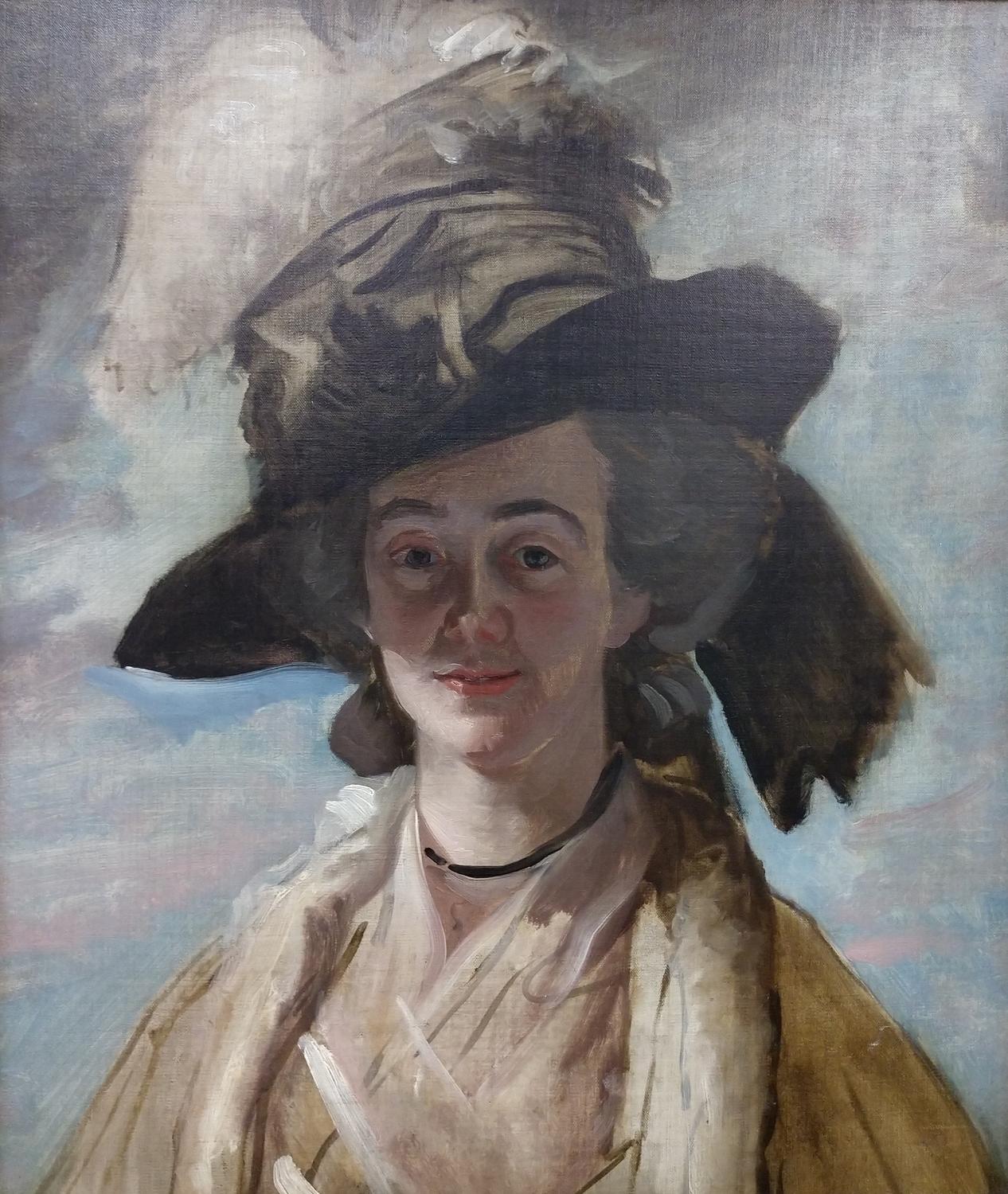Mrs. Charles Startin (Sarah Clarke), the Artist’s Sister-in-Law

John Singleton Copley (Boston, Massachusetts 1738–1815 London, England), Mrs. Charles Startin (Sarah Clarke), the Artist’s Sister-in-Law, ca. 1783, Oil on canvas, 23 1/2 in. x 19 1/2 in. (59.7 cm x 49.5 cm), Gift of Mary H. White (Class of 1979) 2021.6.1
This portrait of Mrs. Charles Startin (Sarah Clarke), the Artist’s Sister-in-Law, by John Singleton Copley was generously donated to the Davis museum by Mary H. White (Class of 1979). A native of Boston, Copley was the preeminent portrait painter in the British North American colonies, widely praised for his ability to capture likeness with painterly virtuosity. While little is known about his artistic training, it is clear that he studied prints of works by European masters and emulated the British portraits that were prized by the colonists. He first left North America at the age of 35 in 1774 to study in Italy, and decided to settle permanently in London the following year due to the start of the Revolutionary War. In England, he continued to be a sought-after portraitist, expanded into history paintings, and was elected to the Royal Academy.
Painted almost a decade after his move to England, this portrait depicts his wife’s sister Sarah Clarke Startin. In 1769, Copley married Susanna Farnham Clarke, the daughter of Tory merchant Richard Clarke, who was a consignee of the tea destroyed during the Boston Tea Party. Susanna, their four children, and her father Richard relocated to London with Copley in 1775. This portrait of Sarah is less formal and more painterly than his exacting colonial portraits. His earlier portraits feature the sitter realistically rendered in an elaborate surrounding, typically holding an item that identifies their status or occupation. Instead, he depicted Sarah from the shoulders up, the focus on her face, which is mostly shadowed by her enormous feather-topped hat. The looser brushstrokes and unfinished quality of her dress suggest that this work was meant for the family and not commissioned for a client. Indeed, this work stayed within the family, descending to John Singleton Copley, Jr., 1st Baron Lyndhurst, and subsequently to other descendants of the artist. This is the second work by Copley in the collections, joining the portrait of Mrs. Roland Cotton (Deborah Mason Cotton), painted twenty years earlier when Copley lived in Boston.